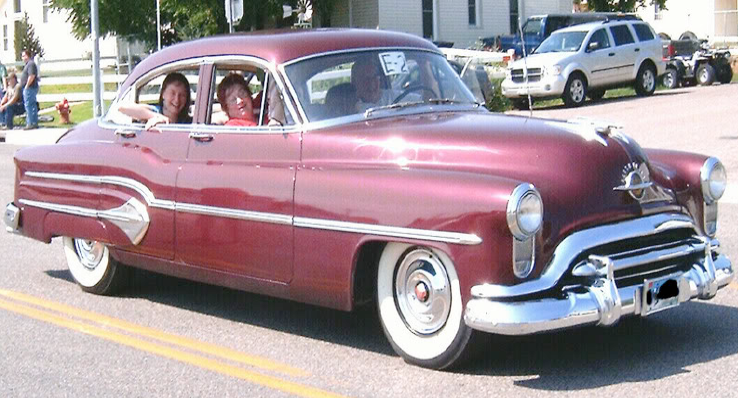|
It’s As Easy As ABC
— By Lynn Newport Like most car buffs, when growing up I read any magazine I could get my hands on to learn about those new and exciting future cars Detroit had in the pipeline. Popular Mechanics had a particularly good name for their monthly ‘Spy’ report called the Detroit Listening Post, Popular Science named it The Detroit Report. These articles where nothing more than a crystal ball prediction of what new cars were coming down the line. In these magazines’ pieces, it was often stated a GM car was going to use an A-B-C or D body design. Back then, such nomenclature was at best confusing. I never was really able to understand its meaning. It wasn’t until many years later I was able to clear up this alphabet soup to understand what the General really meant. The birth of the ABC styling system, according to some accounts, starts in 1931 with an engineer by the name of Kap Kuptur. While serving as the liaison between Harley Earl’s famous GM Art and Colour (A & C) design studio and the Fisher Body fabrication unit, Kuptur made an interesting observation. He noticed that the door dimensions for Chevy, Pontiac and the small Olds were all within less than a half an inch of one another. Likewise, those for the big Olds, Buick and small Cadillac were also very close. To prove his observation, he made paper tracings of each type of door. He showed them to Mr. Earl, who immediately became very excited. There was a simple reason. Like those of the other auto manufacturers, GM’s sales had fallen through the floor - the real effects of the Great Depression had taken hold. Tremendous pressure was being put on Earl to reduce vehicle costs. He was searching for ways to come up with more economical designs. Remember, up to then each of the General’s five major car lines was quite distinct, totally independent from the design standards and methods practiced by the others. Harley Earl realized immediately that at least in theory the introduction of an A-B-C-D shared body system could save the corporation hundreds of millions of dollars every year. On the other hand, in order to pull this off, the Art & Colour group would have to figure out a way to disguise each car line to give the illusion of totally unique styling. In the end, they did such a good job of it that Ford did not fully grasp the concept until around 1950! It must be noted that early on Chrysler did use some shared bodies for economic reasons, but Chrysler was never able to disguise them as skillfully as had General Motors. Some people referred to this as product rationalization. It began to take roots in the mid-1930s, but it was a full-grown phenomenon by 1949 or ’50. For the sake of simplicity, this sophisticated program could be described as follows: All Chevrolets, Pontiacs and small Oldsmobiles would use the ‘A’ body, hood, doors, fenders and the like. The large Olds, the Buick and the small Cadillacs shared the same basic, but larger ‘C’ body. The ‘D’ bodies were reserved for the limos from Buick and Cadillac. By wisely investing some of the savings back into the exterior designs, GM A & C was able to afford many visual tricks to maximize the unique appearance among marques. They started with the paint and chrome schemes, and fleshed those out with the grille and bumper treatments. For some models, such as the 1950 Cadillac, the Series 62 rode on a C body, while the Series 75 modified the C body by lengthening the rear doors and stretching a C body roof. Sometimes stampings were slightly modified during production to add things such as the Cadillac P-38 fin effect. Underneath, we often discover many of the body parts are interchangeable with other GM sister makes. What’s truly amazing to see what a wonderful job Art & Colour pulled off to maintain this distinct brand identity. The differences are dramatic. Did you see the photos at the top of this article showing the 1951 Cadillac 60 Special and an Oldsmobile 98? Can you find the resemblances? As time went on the A & C designers became extremely skilled in the art of illusion. In order to better cost-justify the vast re-tooling expenses needed for the all-new 1959 models, the A-B-C-D body plan was scrapped and one basic ‘C’ platform was adopted. This universal platform could be lengthened or shortened, but the windshield, cowling, width, front doors, as well as longer or shorter fenders remained the same. Fins and wings could be added, trunks modified, but underneath was the C body. By understanding the basics of the A-B-C and D design concept, when looking at many of the GM 50’s era cars, one can easily see the family resemblance.
0 Comments
Leave a Reply. |
AuthorPeach State Cadillac and LaSalle Club enjoys the benefit of multiple talented writers/members for this blog. A BIG thanks to all our contributors for sharing your deep knowledge base about classic Cadillacs! Archives
February 2022
Categories |
Please contact [email protected] for more information.
©2023 Peach State Cadillac & LaSalle Club. All rights reserved. Webmaster: [email protected]
©2023 Peach State Cadillac & LaSalle Club. All rights reserved. Webmaster: [email protected]



 RSS Feed
RSS Feed